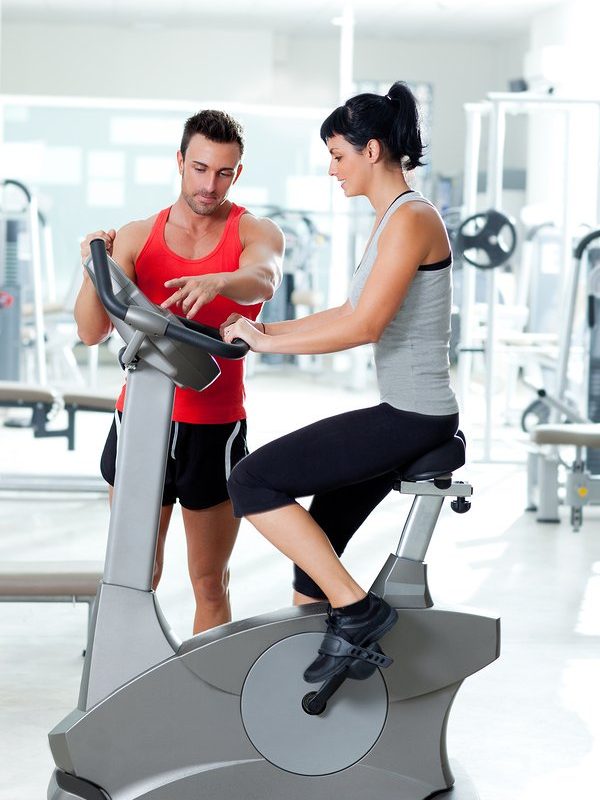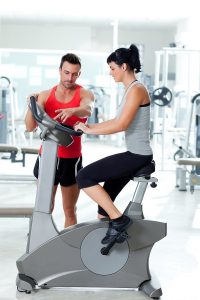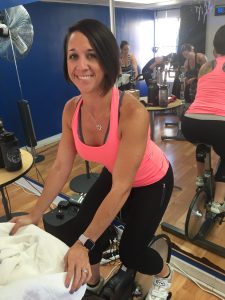
Recently, one of the trainers at a gym where I teach group fitness approached me and asked me to help him create a quick, yet intense bike workout for one of his clients. She loves attending class but cannot often make the time to get to class, and she feels lost when she rides on her own.
Indoor cycling and Spin classes are popular for a number of reasons. They are choreographed to awesome tunes; they allow riders to utilize group energy for motivation; and they provide a workout that, for all intents and purposes, cannot replicated on one’s own.
When a class is not an option
Sometimes, however, a class may not fit into your client’s schedule. That doesn’t mean they can’t hop on a bike when the mood strikes them.
While there are many aspects of a group class that can feel nearly impossible to do outside of the class, there are a few things you can teach your clients to do on their own to get a killer workout without the class commitment.
Riding Solo
What can they do on their own to get a quick, yet effective workout?
Interval training is a practical option.
Group fitness instructors spend a lot of time putting together a dynamic ride that is synced to music. When riding solo, rather than waiting for the perfectly timed beats-per-minute (bpm) to say, do a sprint, the clock can be used to the rider’s advantage; enabling them to squeeze in some interval training.
Why interval training?
Intervals that push riders to the max and then provide a period of recovery have been found to burn more fat than continuous moderate cycling. Find out why.
What should interval training on a bike look like?
If your client is fortunate enough to ride on a bike with a computer that indicates speed in revolutions-per-minute (RPM), flat-road intervals should be 100-110 on the RPM, or 60-75 RPM for hill intervals.
If a bike with fancy technology is not available, rate of perceived exertion (RPE) is the next best option. A scale of 0-10, as you can find here , is a realistic approach.
Using RPE to get the job done
Teach your clients to identify their endurance zone. Their intervals should be intense bursts that can only be held for 30-45 seconds, and where they cannot say more than a word or two. I always tell my riders that all they should be able to say is, call 911. They should feel like they’re working at or above their endurance zone during the interval.
Each burst should be followed by a period of active recovery, where the legs are kept moving so blood makes it’s way back to the heart safely and then back out to the muscles re-oxygenated in time for the next burst.

3 interval cycling drills for your clients
Sprints on a flat road
For sprints on a flat road, keep an eye on how long the all out sprint of 100-110 RPM or a perceived exertion of 10 on a 0-10 scale is. Remind them that a good sprint should only be sustainable for 30-45 seconds. Take the same amount of time for recovery as you do for the sprint.
Hill intervals
For hill intervals, alternate from a flat road in the recovery phase to a heavy hill, 60-65 RPM or 10 on that RPE scale. Same as a sprint, create enough of a challenge that this hill could not be held longer 30-45 seconds. Follow with recovery.
Run on a hill
For a run on a hill, riders can either leave a hill of about 70-75 RPM on and simply alternate the run and recovery, or they can take the hill off during recovery and put it back up when just before the all out attack. Remember that they should be gassed at that 30-45 second mark so take recovery for the same amount of time as the interval.







